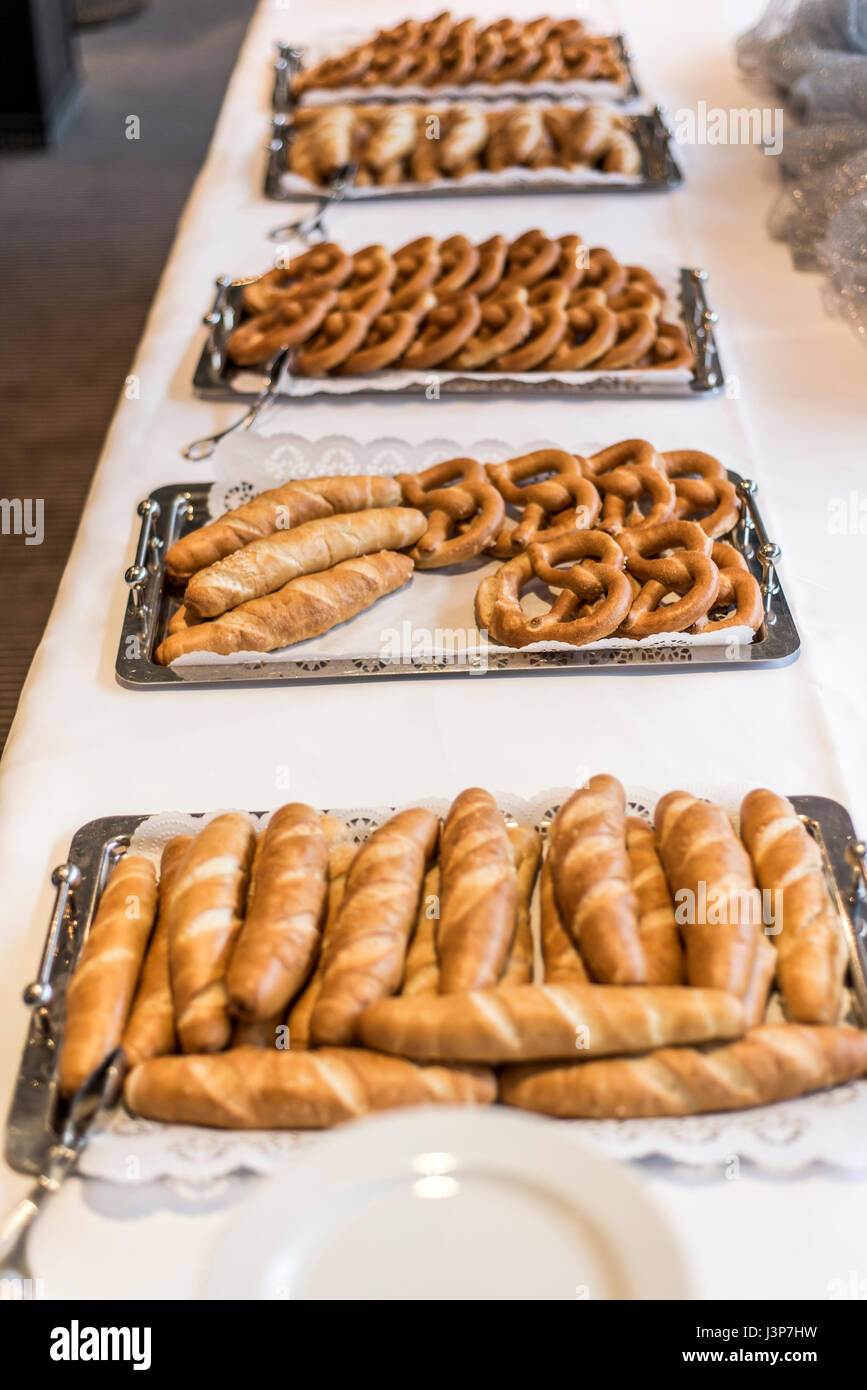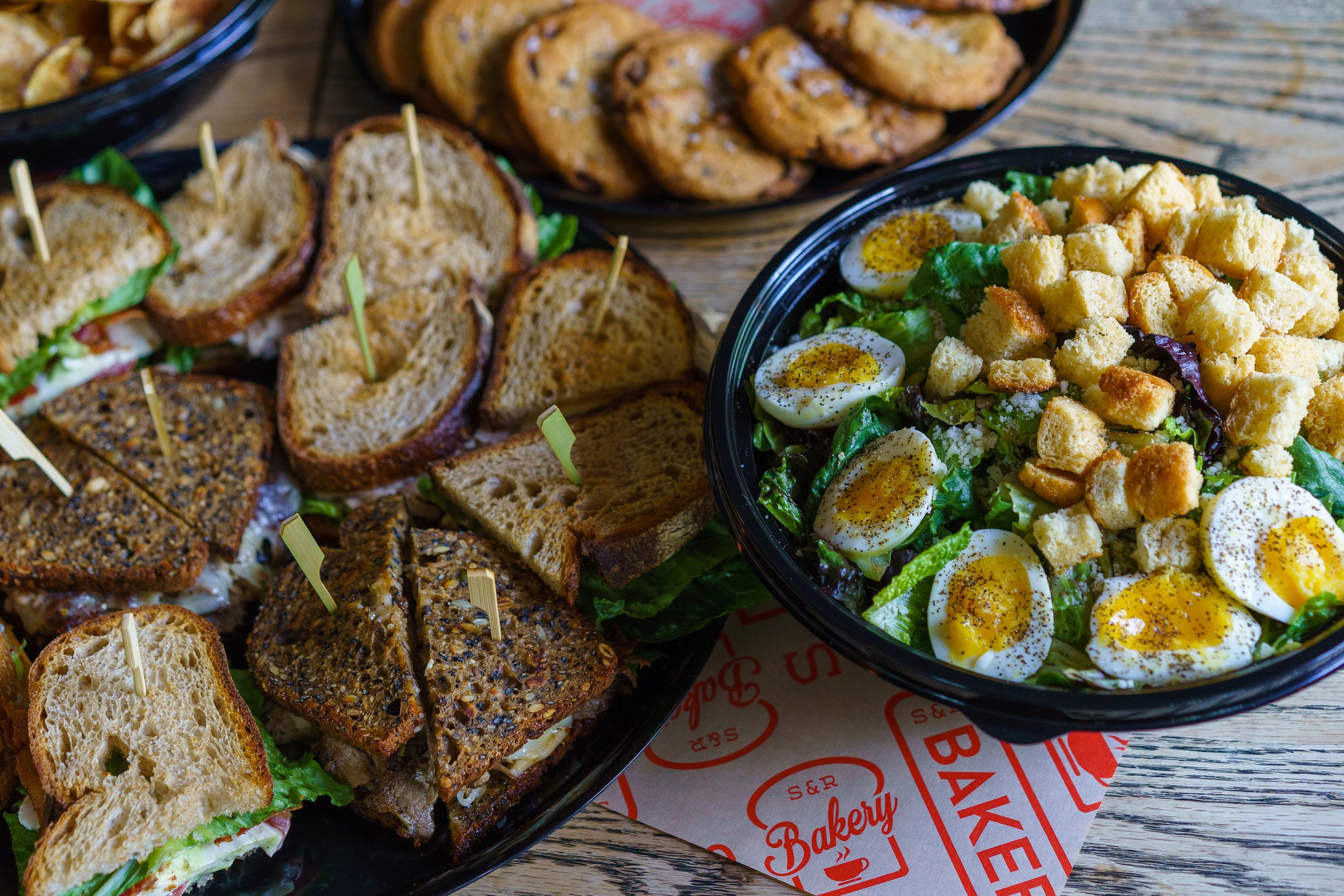Pastry Shop Catering Maddington: Perfect for Weddings and Occasions
Pastry Shop Catering Maddington: Perfect for Weddings and Occasions
Blog Article
Recognizing the Art of Pastry Shop Products: From Freshly Baked Breads to Alluring Pastries and Finger Foods
The complex art of pastry shop products encompasses a range of techniques and ingredients that transform fundamental elements right into cooking delights. From the science behind the ideal loaf of bread, where fermentation and gluten advancement play crucial roles, to the finesse required for producing split breads, each aspect reveals a compelling narrative of craftsmanship. The flexibility of finger foods shows how flavor and texture can be artfully combined to involve varied preference choices. As we discover these components, one might question: what underlying concepts regulate the success of these cherished developments?
The Scientific Research of Bread Making
At the heart of every loaf of bread lies a remarkable interaction of chemistry and biology. The process of bread making begins with the mix of flour, salt, water, and yeast-- each ingredient playing a vital role in the last item.
Yeast, a living organism, ferments the sugars existing in the flour, producing co2 and alcohol in the procedure. The carbon dioxide gas produces bubbles in the dough, creating it to rise and establish a light texture. The temperature level and moisture during fermentation dramatically influence yeast task and, subsequently, the bread's taste and texture.

Learning Pastry Techniques
Just how can one attain the delicate equilibrium of texture and flavor that specifies outstanding pastry? Grasping bread methods calls for a deep understanding of ingredients, approaches, and the science behind them. Essential to this craft is the option of premium active ingredients-- flour, butter, sugar, and eggs-- each playing an important duty in the end product's taste and appearance.
The technique of lamination, which includes folding layers of dough and butter, develops the desired flakiness in pastries like croissants and smoke bread. Precision in temperature is crucial, as butter should stay cool to ensure ideal layers. Correct blending methods, such as the creaming technique for cakes, make sure also unification of air and fat, resulting in a light and airy crumb.
Additionally, keeping the appropriate humidity levels during baking can substantially influence the outcome, making sure that breads increase properly and attain that golden-brown coating. The art of bread additionally requires patience and practice; each effort boosts one's ability and understanding of the intricate equilibrium called for to develop alluring pastries that delight the senses. Proficiency in these strategies inevitably identifies a knowledgeable bread cook from an amateur.
Kinds of Finger Foods
The world of culinary delights expands past pastries to encompass a wide range of finger foods, which are celebrated for their benefit and flexibility. These bite-sized deals with are best for celebrations, providing an array of tastes and structures that cater to varied tastes buds.

On the sweeter side, bite-sized cupcakes and miniature tarts supply a delightful finish to any type of meal, attracting those with a pleasant tooth. Cheese and charcuterie boards serve as an advanced option, enabling guests to personalize their bites with a variety of meats, nuts, fruits, and cheeses.
Taste Profiles in Cooking
Baking is an elaborate dance of taste accounts that integrates wonderful, tasty, and umami notes to create a harmonious experience for the taste. Recognizing these accounts is vital for bakers seeking to elevate their productions.
Components such as chocolate and sugar introduce complicated sweet notes that can either dominate or enhance other tastes. Ingredients like natural herbs, cheeses, and spices can change a simple dough right into a complex flavor experience.
Umami, often overlooked in baking, plays a substantial role in enhancing tastes. Ingredients such as aged cheeses, fermented products, or also certain nuts contribute to a mouthwatering depth that improves general preference.
Additionally, the interplay of level of acidity from active ingredients like buttermilk or citrus zest can brighten tastes, supplying a refreshing counterpoint to sweetness. By attentively incorporating these flavor profiles, bakers can craft products that reverberate with varied tastes, creating an extraordinary culinary experience. Inevitably, understanding you can find out more flavor profiles is crucial to technology on the planet of baking.
Necessary Cooking Devices and Active Ingredients
Understanding taste accounts in baking sets the my latest blog post phase for choosing the right tools and ingredients that facilitate the production of outstanding baked products. A reputable set of cooking pans-- such as sheet pans, loaf frying pans, and cake pans-- is essential for achieving desired structures and forms.
In regards to components, quality issues substantially. Flour functions as the foundation of many recipes; selecting the best kind-- be it all-purpose, bread, or bread flour-- can dramatically influence the outcome. Sugar not just sweetens but additionally adds to appearance, while eggs serve as binders and raising agents. Cooking powder and cooking soda are essential for producing lift in pastries and cakes.
In addition, incorporating taste boosters like vanilla essence, seasonings, and citrus zest can boost your creations. By making sure accessibility to these fundamental tools and active ingredients, bakers can confidently start their cooking journey, crafting a varied range of fascinating baked items.
Conclusion
Finally, the art of pastry shop items encompasses a profound understanding of both innovative strategies and scientific principles. Proficiency in bread production, bread prep work, and finger food discussion discloses the intricate connections between procedures and components. Exploring diverse flavor profiles enriches the baking experience, while important tools and ingredients provide the structure for success. Inevitably, the captivating globe of cooking prospers on the harmonious interplay of science and creativity, resulting in a myriad of delightful culinary creations.
Just how can one attain the fragile balance of appearance and flavor that specifies extraordinary bread? Basic to this craft is the selection of high-grade components-- flour, butter, sugar, and eggs-- each playing an important duty in the final item's flavor and appearance.

Understanding flavor profiles in baking sets the stage for selecting the right tools and ingredients that help with the development of extraordinary baked products. Checking out varied flavor profiles enriches the baking experience, while vital tools and ingredients offer the foundation for success.
Report this page